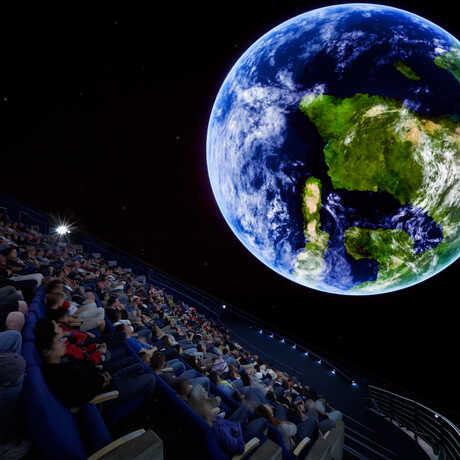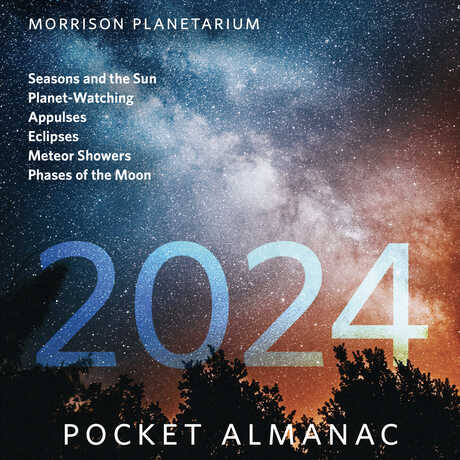Benjamin Dean Astronomy Lectures
Unraveling the Mysteries of the Sun's Atmosphere

A large eruption in the low solar atmosphere caught in the act by NASA’s Interface Region Imaging Spectrograph (IRIS), a solar telescope orbiting Earth since 2013. Earth is shown for scale. When these types of events propagate into interplanetary space they can impact space nearby Earth, causing space weather.
Unraveling the Mysteries of the Sun's Atmosphere
Monday, October 7, 2024
7:30 pm, Morrison Planetarium
Featuring Dr. Bart De Pontieu | Lockheed Martin’s Solar & Astrophysics Laboratory
The Sun, our nearest star, is more than just a blazing ball of fire. Its atmosphere, hotter than its already scorching surface, presents a puzzle that has intrigued scientists for years. How does the Sun’s magnetic field heat its chromosphere to 10,000 degrees—and its corona to more than a million degrees? This enigma holds significant implications for Earth, as the Sun’s corona hosts powerful explosions and eruptions that can trigger space weather events affecting our technology-dependent society. From mesmerizing auroras to disruptions in communication systems and satellite operations, the Sun’s activity touches our daily lives in unexpected ways.
This talk will delve into the recent strides made in understanding the Sun’s atmospheric dynamics. Thanks to breakthrough observations from space-based telescopes such as NASA’s IRIS and SDO, coupled with advancements in supercomputing, we are gaining deeper insights into the mechanisms driving solar heating. Moreover, we will explore the upcoming frontier in solar research, with future observatories including NASA’s MUlti-slit Solar Explorer (MUSE) mission poised to revolutionize our understanding of the Sun’s behavior and its impact on our planet and beyond.
About Dr. Bart De Pontieu

Bart De Pontieu is a solar physicist whose research focuses on using high-resolution observations and numerical simulations to understand the physical processes that cause the rapid rise of temperatures from 10,000 degrees to millions of degrees in the low solar atmosphere. He is a Fellow at Lockheed Martin’s Solar & Astrophysics Laboratory which is part of Lockheed Martin Advanced Technology Center (LM ATC) in Palo Alto, California. Dr. De Pontieu is the principal investigator for NASA’s Interface Region Imaging Spectrograph (IRIS), a solar-observing small explorer satellite mission built by LM ATC which has been observing the Sun’s atmosphere since its launch in 2013. He is also the principal investigator of the new MUlti-slit Solar Explorer (MUSE) mission, a solar-observing medium class explorer satellite mission to be launched in a few years.
Dr. De Pontieu started his career in astrophysics as a teenage amateur astronomer in Belgium, with a passion for observing meteors and artificial satellites. He studied physics engineering at the University of Ghent, Belgium, and got his PhD in astrophysics at the University of Ghent and Max Planck Institute for extraterrestrial physics in Garching, Germany. After a postdoc at Stanford University, he has been at Lockheed Martin since 1999 where he has worked on many solar physics satellite missions, including TRACE, Hinode, Solar Dynamics Observatory, IRIS, MUSE, and Solar-C. He is also an adjunct professor at the Institute of Theoretical Astrophysics at the University of Oslo.
From outer space to Earth's inner core, explore the universe from Morrison Planetarium's 75-foot digital dome.

Download Morrison Planetarium's 2024 Pocket Almanac to stay up-to-date on eclipses, meteor showers, satellite spottings, and more.
